Manage My Practice put together a great case study about marketing your practice. They create a model of marketing success using the career of Jay-Z. Never heard of him? Well then your kids have. He’s only the most successful rap artist of all time, who’s also parlayed his success into careers in fashion, merchandising, vodka, and a stake in the NBA’s New Jersey Nets franchise. His success, beyond the normal hard work and talent, is ultimately in marketing himself. That’s something many of us are loathe to do. But it can really pay off with your practice.
Tag Archives: dpc
MUST FOLLOW_The Self Pay Patient Blog
Sean Parnell reached out to us recently, expressing support of our cash-for-service model of primary care. We’re glad he did. Turns out he runs a blog called The Self Pay Patient and it’s a helpful resource for “tens of millions of Americans who are either uninsured, have high-deductible health insurance, or just want to escape from bureaucratic medicine…”
His blog entries are the basis of a book he’s currently writing that will be “a ‘users guide’ to self-pay medicine, explaining in detail how to find doctors, hospitals, pharmacies, and other providers of health care goods and services…”
He recently wrote about a patient who needed knee surgery and benefitted indirectly from cash-only medicine. The first hospital he visited wanted an out of pocket payment (he had a “good” insurance plan) that was MORE than the cost of the whole operation at the Surgery Center of Oklahoma, a cash-only facility. In the end, the patient used price transparency to negotiate and save about $3,000 on his procedure.
READ THE COMPLETE STORY ON ABC NEWS
Once more we see the power of the market, and price transparency, in making healthcare more readily available. We believe it’s worth writing down — every direct primary care practice and every cash-only hospital that offers competitive, cost-saving procedures, treatments, prescriptions, etc. puts pressure on the insurance companies to treat clientele more fairly. Cheers to Mr. Parnell’s blog for keeping a record of these establishments and spreading awareness of their benefits.
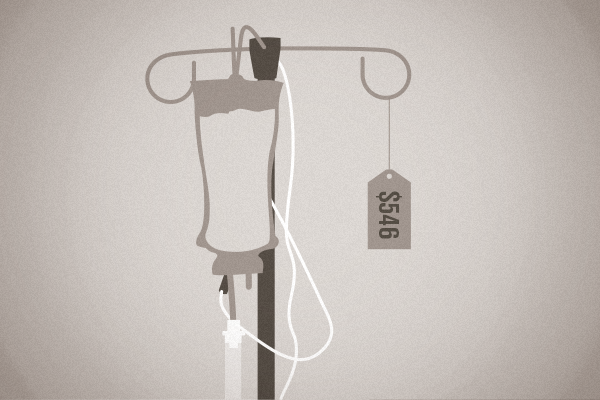
You CAN Charge $546 for Six Liters of Saltwater in America
When we first read this headline, we thought it was a loose allegory, something akin to selling ice to an eskimo. But no, this headline is to be taken literally. The New York Times ran this article following up on absurd charges billed to a group of tourists who came down with severe food poisoning. According to the Times, “Some of the patients’ bills would later include markups of 100 to 200 times the manufacturer’s price, not counting separate charges for ‘IV administration.’ And on other bills, a bundled charge for ‘IV therapy’ was almost 1,000 times the official cost of the solution.”
You’re Going To Love Direct Care Even More
We’ve heralded the Atlas MD-style of direct care for years now. Mostly for its simplicity — you get rid of the most aggravating part of practicing medicine, the insurance billing; you start spending more time with patients, who actually pay you; you make more money, doing the enjoyable part of your job. Then add on the benefits to your local community, such as decreased ER visits. This means emergency staff can focus on legitimate trauma, and not be burdened by cases that yes, might be painful, but can be quickly remedied by your on-call physician. Oh, and by providing 24/7 access to a doctor for a yearly fee of around $600 patients actually make appointments (by the way, $600 equals less than two months of a typical full coverage, PPO health insurance plan, an expensive plan you won’t need since your doctor visits are now free, along with copious other procedures). And, to top it off, things like MRIs and other costly procedures have been negotiated at reduced costs. Don’t forget downstream benefits of proactive care for insurance companies who won’t dole out payments to treat preventable conditions like high blood pressure and type II Diabetes.
Oh, right, but we had something to add to the snowballing benefits of direct care. Practicing physicians can also cut their malpractice insurance premium in half *. Yep, that’s right. Even the insurance agencies know that when patients come in to see a direct care physician, their doctor has time to make proper diagnoses, and provides more reliable care. Therefore, the chances of something being overlooked or mistreated are reduced.
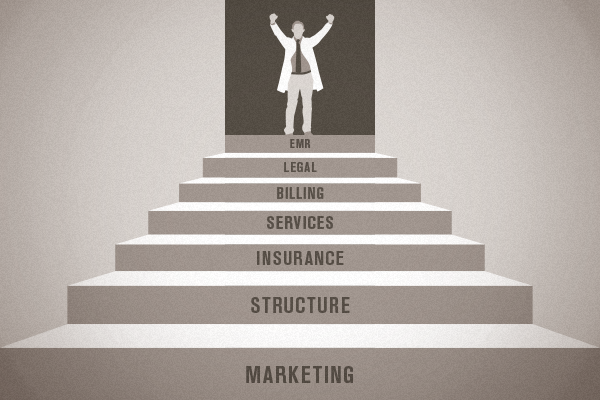
7 Things Transitioning Direct Care Physicians Need To Consider
Okay, so you’re sold on at least four key benefits of practicing direct care and/or concierge medicine. However, in order to realize your own direct care success, you’ll need to make certain preparations.
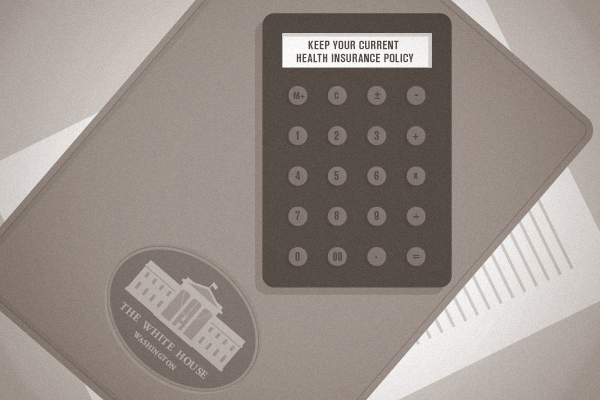
Try The New Online Obamacare Calculator
Scott Borden is the HSA Guy. He’s an outspoken critic of government regulation as well an advocate for HSA funding being utilized in the direct care realm. Oh, and in his spare time, he created a series of online Obamacare calculators to help you make quick cost comparisons between your current healthcare plans and those offered by state insurance agencies. Questions The Calculator Will Answer
- Should I keep my existing plan or get a new one in the exchange?
- Should employees and their dependents remain on employer plans or get individual policies?
- Will I qualify for a subsidy?
And while we’re on the topic of Obamacare, if you have seven minutes, here’s a helpful rundown from the folks over at YouToons:
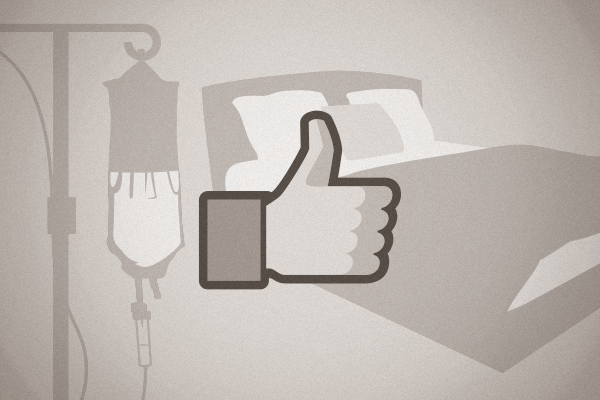
What Are Consumers Looking For In At-Home Medical Products
We’re fans of at-home medical care in conjunction with direct care. And that’s not just lip service. We’ve designed our own personal EMR software to communicate with self-monitoring healthcare apps like FitBit. MedGadget‘s recent post spells out the factors of a good at-home medical device, and the benefits of getting these well-made devices in consumer’s hands. It’s worth a look.
Yet Another White House Obamacare Delay: Out-Of-Pocket Caps Waived Until 2015
Remember how everyone’s been talking about that unseemly document, the one that was well over 1,000 pages and included all the details about Obamacare? The details that no single person could fully articulate? These were the details that had us all saving money somewhere, supposedly.
In case you haven’t heard, the cat is out of the bag. It now looks like that maze of text might not even matter, since federal officials secretly passed a ruling that would grant a one-year grace period to some insurers, allowing them to set higher limits, or no limit at all on some costs, in 2014. According to The New York Times, “The grace period has been outlined on the Labor Department’s Web site since February, but was obscured in a maze of legal and bureaucratic language that went largely unnoticed.”
UPDATE: Dr. Josh’s Interview With The Objective Standard Now Available Online
Head over to TheObjectiveStandard.com to read Dr. Josh’s recent interview with Ari Armstrong. We sent out a PDF copy last week to our subscribers, but if you missed it, you’re in luck. You can check it out right there on the website, or download it as a PDF.
In the interview, Dr. Josh fleshes out his vision of direct care, one that’s taken the interest of influential parties, including patients, doctors, insurance companies, and even members of the state congresses. Yes, direct care sounds utopic, and therefore unrealizable, but if you remove the bias and look at the data and listen to its success stories, it’s clear that healthcare wins when doctors spend time with patients and not paperwork. Of course, direct care doctors see many fewer patients than those operating inside the red tape, and Dr. Josh addresses this issue with honesty and conviction.
Ari Armstrong is the assistant editor of The Objective Standard, and a writer/blogger based in Colorado. Besides purveying the philosophy of Ayn Rand, his book Values of Harry Potter: Lessons for Muggles explores themes contained within J.K. Rowling’s beloved Harry Potter novels. Obviously, Ari’s well-rounded. Thanks to him for conducting such an insightful conversation about direct care.
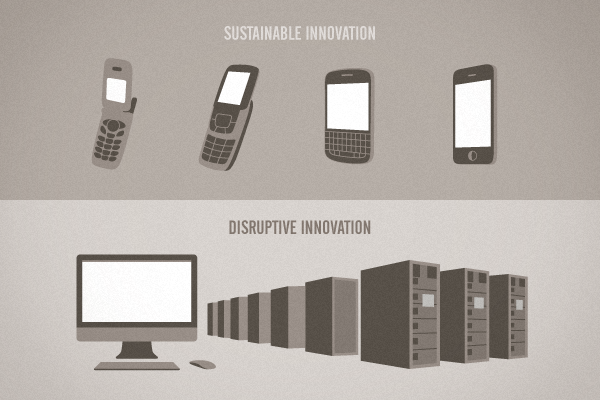
Huzzah! Clayton Christensen Institute Explains EHR’s Inevitable Failure
The Clayton Christensen Institute For Disruptive Technology is a think tank that understands how different products can actually start small and grow into prominence in the marketplace. You can read their reasoning for why EHR is not disrupting the marketplace here. Their article explain why most EHR offerings are just a more expensive way to do what paperwork is already doing. This fact, coupled with government incentives, makes for what they call a sustaining model, where each year you are offered new, more expensive products that are hardly an improvement from the year before. In the end, it’s a mean game of horse and carrot, and not a “disruption” that improves industry output and “consumer” satisfaction (doctors in this case are the consumers, and the output is more efficient hospital operation). So yes, we are talking theory here. But, the model’s predictions do match the data–which is that hospitals have spent lots of money on software and seen paltry results.
